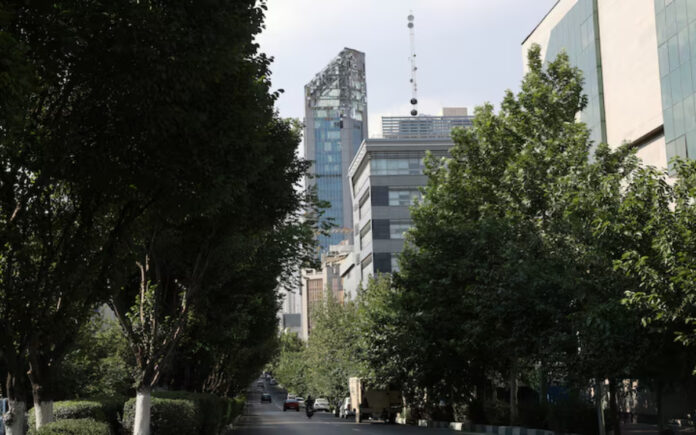Tehran/Washington: Despite the scale of Israel’s recent military strikes on Iran, nuclear experts say the damage to Iran’s key nuclear facilities appears limited so far, according to satellite imagery and initial assessments.
U.S. President Donald Trump, in an interview with Reuters, stated that it remained uncertain whether Iran still had a functioning nuclear program in the wake of the attacks. “Nobody knows,” Trump said. “It was a very devastating hit.”
The Israeli strikes reportedly succeeded in eliminating several high-ranking Iranian military commanders and nuclear scientists, and also hit critical military infrastructure, including command centers and air defense systems. However, experts emphasized that the core of Iran’s nuclear program—particularly its heavily fortified underground sites—appears largely intact at this stage.
Nuclear expert David Albright of the Institute for Science and International Security explained the initial focus of the assault. “The first day was aimed at things that you would get through surprise – killing leadership, going after nuclear scientists, air defense systems, the ability to retaliate,” he said.
Albright noted that while some damage was confirmed at Natanz, one of Iran’s main nuclear facilities, other critical sites such as Fordow and Isfahan did not show visible destruction. “We can’t see any visible damage at Fordow or Isfahan. There was damage at Natanz,” he said. “There’s no evidence that the underground site was destroyed.”
In his address to the United Nations Security Council, International Atomic Energy Agency (IAEA) Director General Rafael Grossi confirmed the destruction of the above-ground pilot enrichment plant at Natanz. Grossi also said that Iran reported attacks on facilities at Fordow and Isfahan. He added that the site’s electrical infrastructure had been damaged, and this may have affected centrifuge operations—but radiation levels outside the site remained normal.
The Natanz complex, a centerpiece of Iran’s uranium enrichment effort, houses both an expansive underground facility and a smaller, above-ground pilot plant. According to regional sources, at least 20 Iranian military commanders and six senior nuclear scientists were killed in the strikes—a blow reminiscent of Israel’s previous high-profile targeted operations.
Albright said satellite images from 11:20 a.m. Tehran time (0750 GMT) were used in his analysis and acknowledged the potential for hidden drone or cyberattacks that wouldn’t appear in such imagery. “In terms of visible damage, we don’t see much and we’ll see what happens tonight,” he said, suggesting the operation could still be in its early phase.
He noted that Israel may have deliberately avoided heavy strikes on sensitive nuclear locations due to the presence of international inspectors. Regarding the thousands of centrifuges at Natanz’s underground facility, Albright warned of the consequences of a power loss: “Batteries … last a while, but eventually they will run out and if the centrifuges spin down in an uncontrollable manner, a lot will break.”
Israel confirmed that its operations had targeted Iranian nuclear facilities, missile factories, and key military leadership, describing the campaign as part of a broader and prolonged effort to prevent Iran from acquiring a nuclear weapon. However, many analysts argue that even with overwhelming firepower, such strikes may only delay Iran’s nuclear ambitions rather than dismantle them entirely.
Jeffrey Lewis, a non-proliferation specialist at the Middlebury Institute of International Studies, characterized the damage at Natanz as “moderate.” He said Israel had destroyed the Pilot Fuel Enrichment Plant and several auxiliary structures, particularly those related to power supply, but noted the underground facilities were likely untouched. “The underground enrichment halls, as well as the large underground facility nearby in the mountains, do not appear damaged,” Lewis said.
There is still uncertainty regarding the extent of damage at the Fordow nuclear site, which is deeply buried and considered among Iran’s most fortified installations. Mark Dubowitz, head of the Foundation for Defense of Democracies, pointed out the limitations of Israel’s capabilities: “It has always been the conventional wisdom that Israel may not have the ordnance to destroy Fordow without American military support.”
The U.S. possesses more powerful bunker-busting bombs, such as the 30,000-pound Massive Ordnance Penetrator, which could be deployed via B2 bombers if diplomatic negotiations fail and military action is deemed necessary.
Decker Eveleth, a strategic analyst with the CAN Corp research group, said the broader objective of Israel’s campaign remains murky. “They may be successful at dismantling Iranian command and control, destroying air forces (and) hitting a variety of targets related to the Iranian missile program,” he said. “(But) if their core objective is prevention of a nuclear breakout, can they destroy enough of Iran’s nuclear infrastructure to actually prevent that from happening?”
As the situation evolves, global attention remains fixed on whether Israel’s offensive will escalate into a prolonged campaign—and if Iran will retaliate or return to negotiations.



